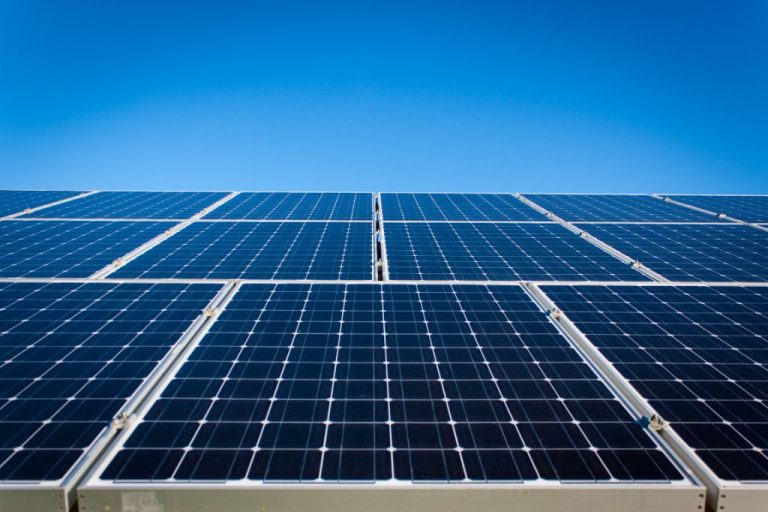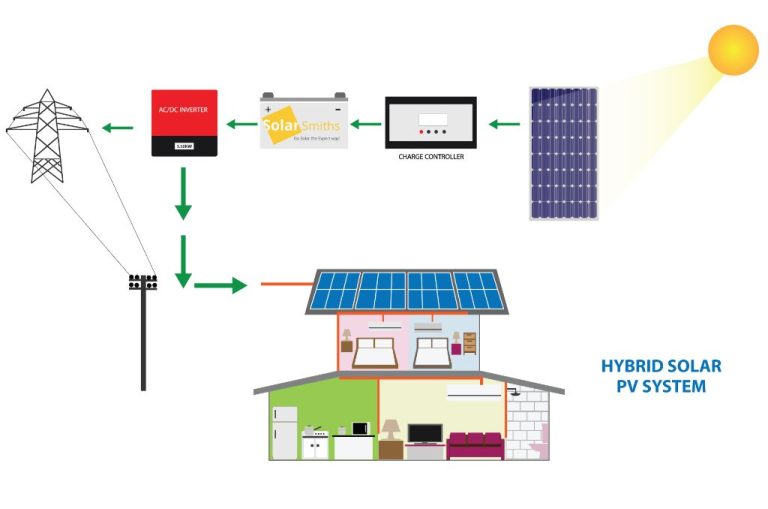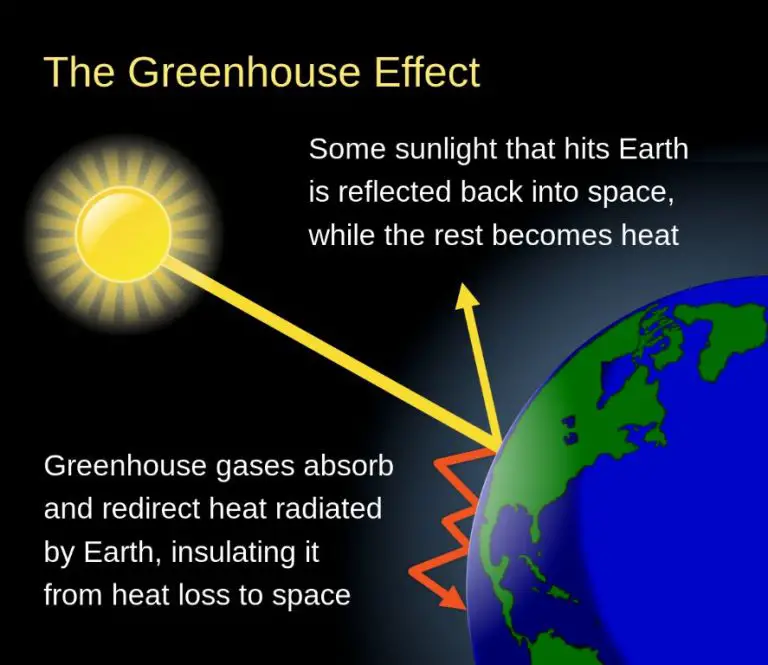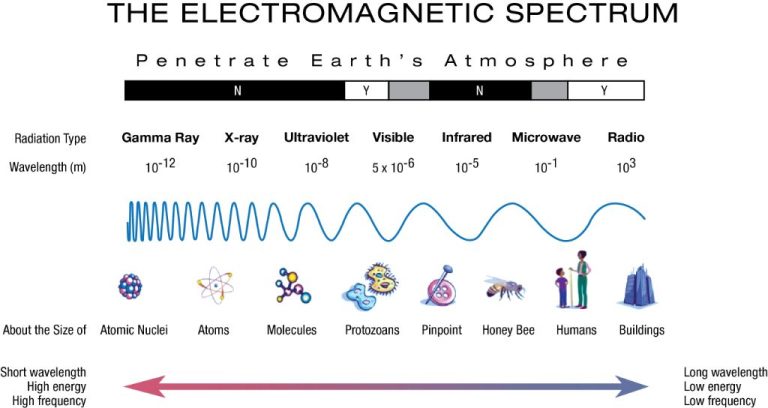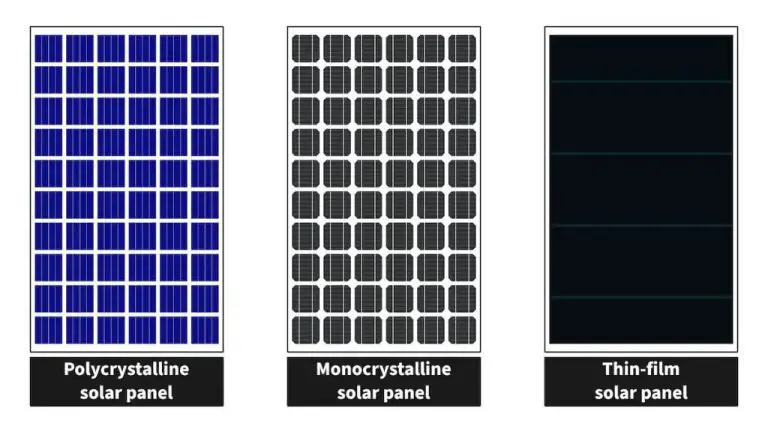How Do Solar And Wind Energy Work Together?
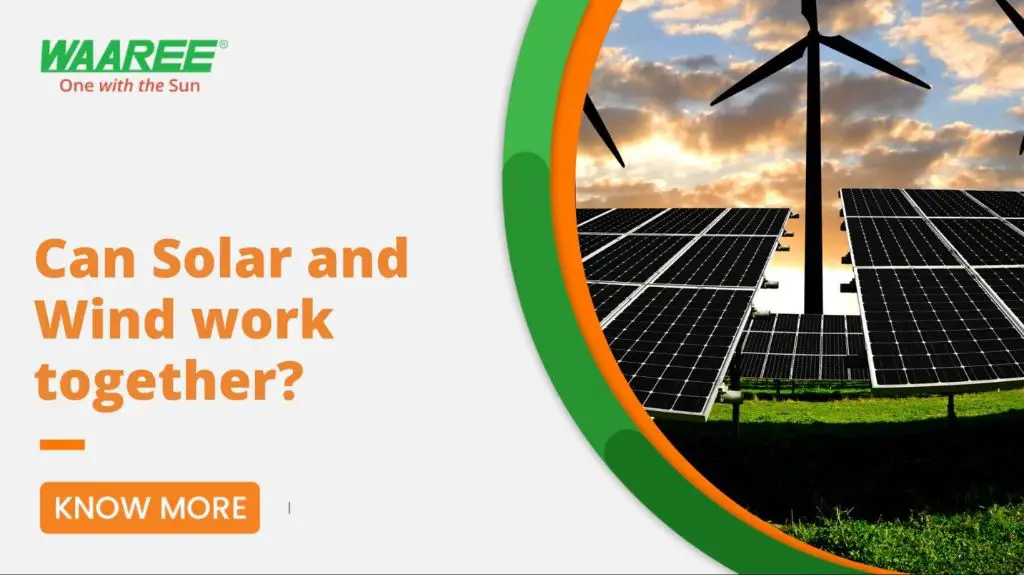
Solar and wind energy are two renewable energy sources that have grown in popularity and adoption in recent years. Both solar photovoltaic (PV) panels and wind turbines can generate clean electricity without emitting greenhouse gasses or other pollution. While solar and wind each have advantages on their own, they also complement each other nicely when utilized together. The sun and wind are freely available natural resources, but vary in intensity based on the time of day, weather, and location. By combining solar and wind in a hybrid system, the strengths of one can make up for the limitations of the other, providing more consistent and reliable renewable electricity generation.
How Solar Energy Works
Solar energy utilizes energy from the sun in two main ways – thermal energy and photovoltaic. Photovoltaic solar panels are one of the most common ways of harnessing the sun’s energy. They are made up of individual photovoltaic cells containing a semiconductor material, usually silicon. When sunlight hits the solar panel, photons from the sunlight are absorbed by the semiconductor material, causing electrons to break free of their atomic bonds. This generates an electric current that flows from the solar panel into an inverter, which converts the direct current (DC) into alternating current (AC), which can then be used to power electrical devices and appliances or fed into the electrical grid (National Grid). Some key advantages of photovoltaic solar panels are that they require no fuel, operate silently with zero emissions, and can be installed almost anywhere with exposure to sunlight.
How Wind Energy Works
Wind turbines convert the kinetic energy in wind into mechanical power which is then converted into electricity. A modern wind turbine works by capturing the wind with two or three propeller-like blades mounted on a rotor. The wind causes the blades to rotate the rotor, which spins a shaft connected to a generator to produce electricity (source).
The amount of energy generated depends on the turbine’s size and the wind’s speed through the rotor. The rotor connects to the main shaft, which spins a generator to convert the rotational mechanical energy into electrical energy. The generator sends out electricity to a transformer, which converts it to the proper voltage for the power grid (source).
Modern wind turbines are designed to optimize efficiency of energy capture. The blades are aerodynamically designed to maximize lift and take advantage of the wind. The turbines face into the wind and sophisticated control systems continually adjust the rotational speed and blade angles as wind speed and direction change. This allows maximum power to be extracted across fluctuating wind conditions.
Complementary Nature
Solar and wind energy complement each other well due to their different generation profiles. Solar power performs best on sunny, hot days when the air is still and wind speeds are low. In contrast, wind power is strongest on cool, stormy days when the wind is high and sunlight is often reduced due to clouds. As noted by the U.S. Department of Energy, “Wind resource tends to complement solar resource.” This is because the peak operating times for solar and wind systems occur at different times of the day and year.
By combining solar and wind energy, the variability and intermittency issues of each resource can be smoothed out. When solar generation drops in the evening as the sun sets, wind power can help meet electricity demand. And when the wind calms during hot, sunny days, solar PV can produce plentiful power. Thus, wind and solar work symbiotically to deliver a more balanced generation profile by covering for each other’s weaknesses. This complementary relationship enables higher combined capacity factors than each could achieve individually.
Grid Integration
Electricity from solar and wind power needs to be integrated into the wider electrical grid in order to be distributed to homes and businesses. This involves connecting solar photovoltaic panels and wind turbines to local distribution networks or sometimes directly to transmission networks.
To integrate variable renewable energy sources like solar and wind, grid operators have to balance electricity supply and demand in real time. Since solar and wind generation output can fluctuate based on weather conditions, grid operators rely on forecasting to predict how much electricity will be produced. They can then schedule power plant operations and dispatchable resources to match demand.
Grid upgrades like new transmission lines may be needed to handle the increase in renewable energy. Advanced grid technologies and computer controls help manage two-way electricity flows. Energy storage systems can store excess renewable energy when supply exceeds demand and dispatch it when needed. By coordinating solar, wind and storage, grid integration helps deliver renewable electricity reliably to meet customer needs.
Sources:
https://windintegrationworkshop.org/
https://iea.blob.core.windows.net/assets/d7e138a1-8c16-42a7-9706-c97d1f6d4de3/IntegratingsolarPVandwindintothegrid.pdf
Location Optimization
The best locations for solar and wind farms are areas that have an abundant supply of each resource. For solar farms, the top places in the United States are the Southwest and Southeast regions. According to the article “Top 10 Best Places in the US for Solar Energy,” California, Arizona, Nevada, and Florida are prime locations due to high amounts of solar irradiation throughout the year (https://www.transect.com/blog/top-places-in-us-for-solar-energy). Solar farms require ample direct sunlight, minimal cloud cover, and hot temperatures to operate efficiently.
Wind farms are ideally situated in windy, open areas including plains, mountain gaps, hills, ridges, and offshore sites. As noted on the U.S. Energy Information Administration website, the Midwest, Texas, and California have abundant onshore wind resources (https://www.eia.gov/energyexplained/wind/where-wind-power-is-harnessed.php). Offshore wind farms are also being developed along U.S. coastlines. By optimizing the location of solar and wind facilities based on resource availability, renewable energy generation can be maximized.
Forecasting
Accurate forecasting of solar and wind generation is crucial for integrating variable renewable energy into the grid. Solar and wind forecasting provides grid operators with advance predictions of the output they can expect from solar and wind plants in the coming hours and days so they can plan accordingly.
Forecasting wind generation relies on numerical weather prediction models like WSA-Enlil that estimate upcoming wind speeds based on weather patterns and historical data. Forecasts can predict wind speeds and power production up to 7 days in advance. Solar forecasting utilizes cloud cover forecasts, satellite imaging, and artificial intelligence to predict sunshine and solar power generation for the next few hours to days ahead.
By combining solar and wind forecasts, grid operators gain a fuller picture of variable generation, allowing them to schedule power plant operations, dispatch additional generation if needed, and integrate renewables seamlessly and reliably.
Energy Storage
Energy storage is a crucial aspect of effectively integrating solar and wind power together on the electrical grid. Solar and wind energy have an intermittent supply since the sun does not always shine and the wind does not always blow. Energy storage helps smooth out these fluctuations in generation and provides grid reliability.
Batteries are commonly used to store energy from solar and wind facilities before releasing it when needed to meet demand. As the Battery Council International reports, lead batteries can reduce power fluctuations from renewables and increase reliability for on-demand power delivery. Battery storage connected to solar or wind farms can store excess electricity when generation is high and discharge when additional capacity is needed.
According to the U.S. Department of Energy, solar energy can also be stored by using it to create fuels like hydrogen that can be later combusted or consumed when electricity is required. Batteries and other storage technologies are key enablers for large-scale solar and wind adoption.
Smart Grids
As more homes and businesses adopt renewable energy like solar and wind, balancing supply and demand on the grid becomes increasingly complex since these sources are intermittent. However, smart grids help address this challenge. Smart grids use sensors, monitoring, communications, automation and computers to optimize the production and distribution of electricity (IEEE Innovation at Work). This enables grid operators to balance the variability of renewable sources through demand response, energy storage, forecasting, and other innovative technologies.
Smart grids allow grid operators to know how much energy is available from solar and wind sources at any given time. They can then balance this fluctuating supply by reducing demand through consumer programs that incentivize shifting usage to off-peak times. Energy storage solutions like batteries can also absorb excess renewable energy production. Accurate forecasting further supports planning the optimal generation mix ahead of real-time. Through this two-way communication and intelligent automation, smart grids keep supply and demand aligned, even with variable sources like solar and wind.
Conclusion
In conclusion, solar and wind energy work very well together to provide clean, renewable electricity. While both renewable sources have intermittent power generation profiles that vary with weather conditions, by combining solar and wind the peaks and valleys can balance each other out. Solar energy peaks during the middle of the day, while wind is often stronger at night, so they complement each other. By building solar PV and wind turbines in the same locations, grid connection infrastructure costs can be shared and the integration complexity is reduced. With forecasting advances and energy storage technologies, the variable nature of solar and wind can be managed through smart grids so their synergies are maximized. Overall, hybrid solar-wind systems allow for greater efficiency, reliability and penetration of renewable energy generation.

